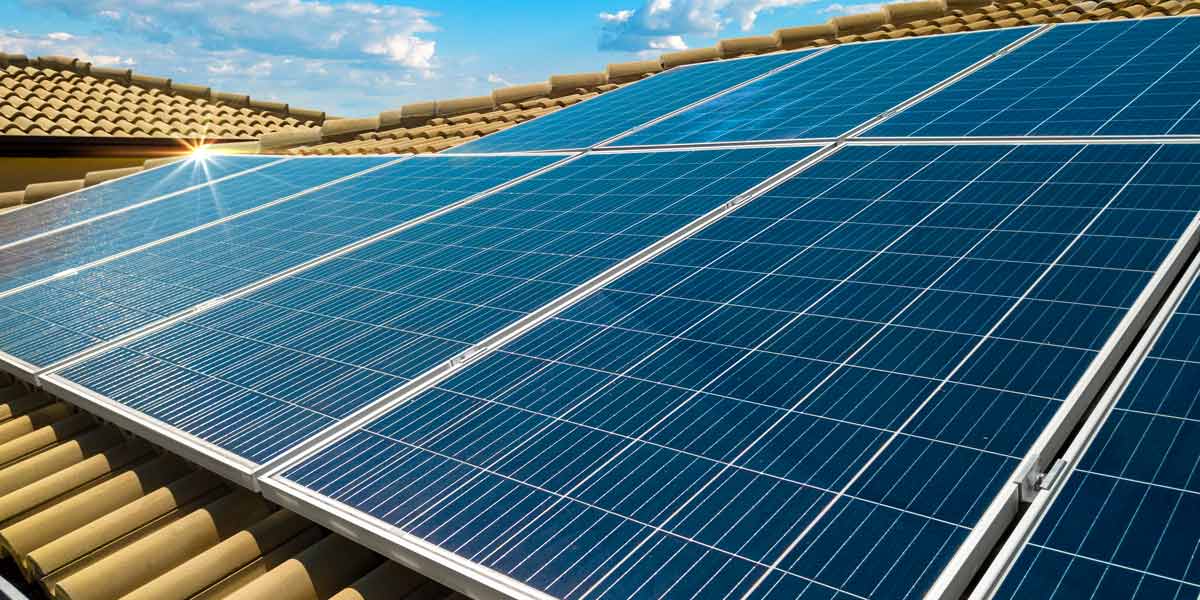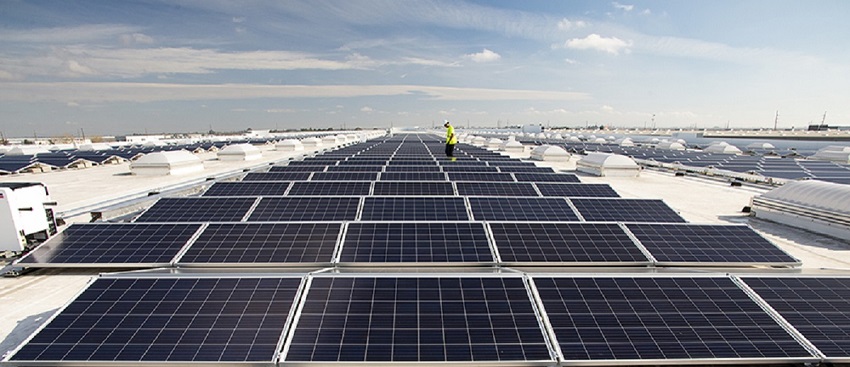Solar Installers Pennsylvania Things To Know Before You Get This
Solar Installers Pennsylvania Things To Know Before You Get This
Blog Article
Solar Power Systems Pennsylvania: Our Company Specializes In The Installation And Management Of Photovoltaic Energy Systems
History and Development of Solar Panel Business
The creation of solar panel business can be traced back to the 1800s when Alexandre Edmond Becquerel found the photovoltaic impact. Would he have envisioned how his discovery would change the method we harness energy?
Early Beginnings

In 1954, Bell Labs established the very first useful photovoltaic cell. This marked a considerable turning point in the history of solar power. They were at first used to power space satellites, but who knew this was just the beginning?
Development and Development
- In the 1970s, an energy crisis led to increased interest in sustainable energy sources, including solar power.
- By the 1990s, developments in technology and increasing environmental awareness resulted in the growth of photovoltaic panel companies worldwide.
A New Era
As we got in the 21st century, the solar industry experienced an exponential development. The demand for clean and eco-friendly energy produced a new era in the solar panel industry.
Fascinating Truths
- The world's very first solar energy station was integrated in 1982 in Hisperia, California.
- By 2019, solar energy had ended up being the world's fastest-growing source of power.
Indeed, the journey of photovoltaic panel business has been remarkable, hasn't it? The future holds enormous potential, with continuous developments leading the way for a sustainable future. Can we envision a world powered completely by solar energy?
Moving on
Today, solar panel companies continue to innovate, pursuing more efficient and cost-efficient solutions. The development of solar energy has come a long way, and yet, the journey has actually just begun.
The Core of Photovoltaic Panel Production
Ever question what goes into developing those glossy, sun-loving photovoltaic panels? The procedure is as remarkable as completion item (Best Solar Panel Company In PA). High-purity silicon, the main active ingredient in photovoltaic panels, undergoes numerous changes to guarantee its efficiency and toughness
From Sand to Silicon
Crystalline silicon, the foundation of the majority of photovoltaic panels, originates from simple sand. It's an interesting journey, isn't it? The sand goes through a high-temperature response with carbon to form silicon. However, this isn't simply any silicon. The silicon used in solar panels is "solar-grade," with a purity of 99.9999%. It's this purity that enables the panels to successfully convert sunlight into power.
Ingot Formation
When the silicon is pure enough, it's time to form ingots. Photo a big, round block of strong silicon. How is this achieved? Through a procedure called Czochralski process, where the silicon is melted and then gradually recrystallized. It's a slow dance of science, resulting in a strong product that is nearly as pure as the raw silicon itself.
Slicing into Wafers
The ingots are then sliced into wafer-thin pieces, like slicing a loaf of bread. Each slice is a possible solar cell, waiting to harness the power of the sun. Did you know that the silicon wafers are just about 200 micrometers thick? That's about half the thickness of a human hair! The process needs accuracy and patience, however the outcome is a set of wafers ready to be become solar batteries.
Creating Solar Cells
With the wafer prepared, it's time for the magic to occur. The silicon wafer is 'doped' with other components like phosphorous and boron to create an internal electric field. It's this field that makes it possible for the conversion of sunlight into electricity. Complex, isn't it?
Assembly and Quality Control
Solar cells resemble puzzle pieces that come together to form a solar panel. The cells are soldered together in a grid-like pattern, then covered with a protective layer of glass. The last step involves strenuous quality assurance checks. It's read more vital that every solar panel carries out at its peak, wouldn't you concur?
Insider Pointer
Always remember that even the most efficiently made photovoltaic panel can lose efficiency due to dirt and particles accumulation. Regular cleaning can considerably improve your panels' efficiency.
Understanding the Environmental Impact of Photovoltaic Panel Companies
Ever pondered the ecological footprint of a photovoltaic panel company? Green innovation, such as solar, has transformed our energy landscape, however what about the behind-the-scenes impact?
The Manufacturing Process: A Double-Edged Sword
The production process for photovoltaic panels demands a considerable quantity of energy. This procedure, called 'em bodied energy', can be considered as a type of 'energy debt'. It's a little like borrowing today's sunlight to power tomorrow's energy requirements. Fret not, the energy repayment time is typically much shorter than you 'd believe!
- The energy payback duration for photovoltaic panels is typically 1-4 years.
- After this duration, the energy produced is essentially carbon-free.

Life After Decommission
And what happens when a photovoltaic panel reaches the end of its life expectancy? Can it just be tossed into the trash? No, that wouldn't be really green, now, would it?
A feasible solution is recycling. While solar panel recycling is still in its infancy, it holds a world of capacity. Recycling not just keeps products out of landfills but likewise lowers the requirement for brand-new raw products.
Accountable Sourcing: More Than A Buzzword
Where does the silicon come from, you ask? The industry's need for silicon and unusual minerals can lead to damaging mining practices. Accountable sourcing is therefore important to reduce damaging environmental impacts.
Lowered Carbon Emissions: The Bigger Photo
Let's not forget the bigger image: solar energy considerably minimizes carbon emissions. When installed, solar panels produce clean, eco-friendly energy, balancing out their initial manufacturing footprint.
In short, the environmental effect of solar panel companies is a complicated concern. With responsible practices, the pledge of a cleaner, greener future is well within our grasp.
Financial Performance and Market Share of Photovoltaic Panel Companies
Ever wondered why some solar panel companies - Commercial Solar Panels PA beat others in the market? What sets them apart? The essential lies in their monetary performance and market share
Financial Performance: A Crucial Indicator
Financial performance plays a pivotal role in the success of any company. For photovoltaic panel business, it's no various. Strong monetary efficiency makes it possible for these companies to buy advanced technology, research, and development, thus creating top quality, efficient photovoltaic panels.
How do they achieve this? With a focus on cost efficiency and tactical financial investments. Companies that handle to decrease production expenses without jeopardizing on quality tend to fare much better in the market.
Market Share: A Procedure of Success
Market share, on the other hand, is a direct reflection of a company's appeal amongst customers. A high market share means more property owners are choosing their solar panels over rivals.
So, what's the secret recipe for getting a larger market share? It boils down to client complete satisfaction and brand reputation. Business that prioritize consumer requirements and keep a favorable brand image are most likely to record a bigger share of the marketplace.
- Client Fulfillment: Solar panel companies that provide trustworthy items and exceptional client service tend to have higher client fulfillment rates.
- Brand Track record: A strong brand reputation is built over time through consistent shipment of quality services and products.
Financial Performance and Market Share: The Symbiotic Relationship
Interestingly, the relationship between financial efficiency and market share is not one-sided. They feed off each other. A strong monetary performance can increase a business's market share, while a high market share can improve monetary efficiency.
As a photovoltaic panel company, balancing these 2 elements is essential for long-lasting success. A company that disregards either of them may find it hard to preserve its position in the competitive solar industry.
The Takeaway
What does all this mean for you? Whether you're a homeowner seeking to set up photovoltaic panels or a financier considering the solar market, understanding the monetary performance and market share of photovoltaic panel business is important. They are key indicators of a company's health and potential for future growth.
Report this page